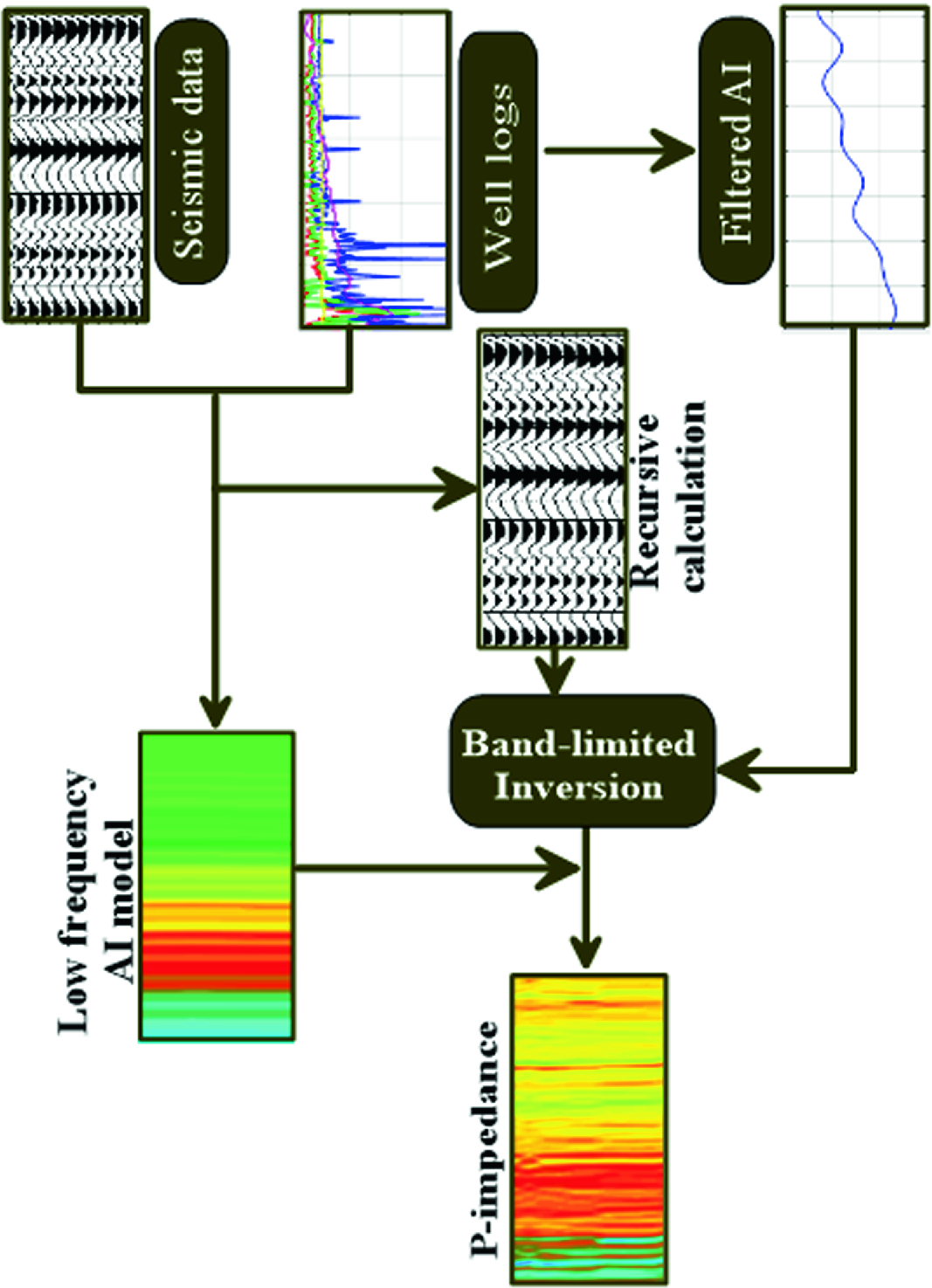

It is worth mentioning that the neural network model for rock properties' estimation is not a novel topic and is mainly based on other researchers' work but it could be claimed that the current study is the first report of pore type determination from seismic data. Afterward, seismic data are inverted to acoustic impedance and then correlation models are established between inversion results and the most relevant seismic attributes by using probabilistic neural networks to generate a section of porosity and pore types. The current study reaps the benefits of both core and log data to generate a most reliable pore type log for the Asmari Formation at three wells of the studied field. The carbonate interval represents a westward extension of the productive Asmari Formation and the Ghar sandstone corresponds to the Ahwaz Member deposited in an onshore environment.

The mixed carbonate and siliciclastic interval of the Asmari Formation is characterized by a transgressive-regressive cycle formed under shallow marine and marine marginal/lagoonal waters in an overall regressive environment. The Oligo-Miocene Asmari Formation is currently the main reservoir unit of the Hendijan oilfield. 1) is located 55 km west of Bahregan District, Persian Gulf. Acoustic impedance is highly under the influence of density and sonic compressional velocity, which are both related to rock properties. Through inversion of amplitude based seismic data to acoustic impedance, many geological and petrophysical interpretations can be made. Ouenes, 2000, Hampson et al., 2001, Doyen, 2007, Kadkhodaie et al., 2009, Dezfoolian et al., 2013, Yarmohammadi et al., 2014, Nouri-Taleghani et al., 2015, Nourafkan and Kadkhodaie, 2015, Kosari et al., 2015, Golsanami et al., 2015). In recent years an increasing trend for incorporation of seismic data into petrophysical investigations and interpretations is observed (e.g.

These fractures generally play the main role in reservoir permeability increase and production. Most productive Iranian petroleum reservoirs are carbonate reservoirs in which some diagenetic overprints such as compaction, anhydrite plugging, cementation and over dolomitization have reduced their quality during the geological time but fractures usually make them more prolific (Wayne 2008).

Velocity deviation log, as introduced by Anselmetti and Eberli (1999), is an important tool for pore typing of carbonate reservoirs. Laboratory research shows that sonic wave velocity, in addition to volumes of porosity, depends on pore types. Pore types determine the trend of permeability and using the velocity deviation log (VDL) can help petrophysicists to determine them from well logging data. Thus, one of the most important challenges in carbonate reservoir study is pore typing. In addition, secondary diagenetic processes enhance these primary complexity and heterogeneity. This is due to their depositional heterogeneities inherited from lateral and vertical facies changes, which cause a complex pore type and size system (Wayne 2008). The results of this study show that integration of petrographic, well logs and seismic attributes is an instrumental way for understanding the spatial distribution of main reservoir pore types.Ĭarbonate reservoirs show higher complexity in comparison to their sandstone counterparts. The methodology is illustrated by performing a case study from the Hendijan oilfield, northwestern Persian Gulf. For this purpose, the inverted acoustic impedance along with the amplitude based seismic attributes were formulated to VDL. In the next step, velocity deviation log was estimated from seismic data by using a probabilistic neural network model. The results of petrographic studies were used to validate the main pore type derived from velocity deviation log. Zero deviations in the range of are in good agreement with intercrystalline and microporosities. Negative velocity deviations (below − 500 m/s) indicate connected or interconnected pores and fractures, while positive deviations (above + 500 m/s) are related to isolated pores. The results allowed identifying negative, zero and positive deviations based on the created synthetic velocity log. In the first step, velocity deviation log was created from the combination of the sonic log with the neutron-density log. The current study proposes a two step approach to create a map of porosity and pore types by integrating the results of petrographic studies, well logs and seismic data. Velocity deviation log (VDL) is a synthetic log used to determine pore types in reservoir rocks based on a combination of the sonic log with neutron-density logs.


 0 kommentar(er)
0 kommentar(er)
